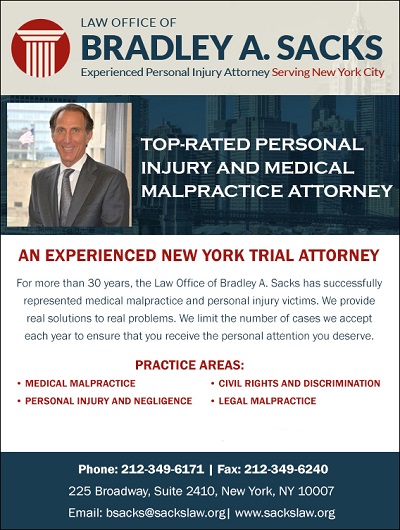At-Risk vs. Risky Investments – How to Reduce EB5 Regional Center Projects Risk
This article has been presented by EB5 BRICS., Learn about EB5 BRICS
The EB-5 Immigrant Investor Program offers foreign investors a path to U.S. permanent residency in exchange for investing in American businesses and creating jobs. However, the requirement that the investment be “at risk” often leads to confusion and concern. Many investors wonder: Does “at risk” mean the investment must be risky? How can you satisfy EB-5 rules while minimizing the chance of losing your capital? More details https://www.eb5brics.com/eb-5-visa-projects Understanding the distinction between an “at-risk” investment and a risky investment is crucial for making smart, secure decisions in EB-5 regional center projects.
What Does “At Risk” Mean in the EB-5 Context?
The core of the EB-5 program is the “at-risk” requirement. U.S. Citizenship and Immigration Services (USCIS) mandates that EB-5 capital must be subject to both the risk of loss and the chance for gain. In other words, your investment cannot be guaranteed or secured in a way that eliminates the possibility of loss. The funds must be actively used in a business venture, exposed to normal commercial risks, and not simply held in escrow or a personal account.
Key characteristics of an “at-risk” investment:
- Committed to the project: The capital must be fully transferred and used to create jobs.
- No guaranteed returns: Any promise of repayment or fixed return violates EB-5 rules.
- Subject to commercial risk: The investment must face the realities of the market, competition, and operational challenges.
This requirement ensures that the EB-5 program genuinely stimulates the U.S. economy and creates jobs, rather than serving as a mere residency-for-cash scheme.
At-Risk vs. Risky: Understanding the Difference
While “at risk” is a legal requirement, “risky” is a matter of degree. Not all at-risk investments are equally risky. The EB-5 program requires you to accept the possibility of loss, but it does not require you to take reckless or unnecessary risks.
At-risk investment:
- Meets USCIS rules by exposing capital to potential loss or gain.
- Is structured to comply with EB-5 regulations.
- May be in a well-managed, thoroughly vetted project with strong fundamentals.
Risky investment:
- Faces a high likelihood of financial loss due to poor management, speculative business models, or weak market fundamentals.
- May lack transparency, oversight, or due diligence.
- Could involve projects with legal, regulatory, or operational red flags.
The goal for every EB-5 investor should be to meet the at-risk requirement while minimizing exposure to unnecessary or excessive risk.
Why Is the At-Risk Requirement Important?
The at-risk requirement exists to ensure that EB-5 capital truly contributes to the U.S. economy. By requiring investors to put their funds at risk, the program encourages genuine business activity, job creation, and economic growth. It also helps prevent fraud and abuse, ensuring that only serious investors with a real stake in the project participate.
However, this requirement does not mean investors must accept poorly structured or speculative projects. The best EB-5 investments are those that are at risk in the eyes of USCIS but are managed prudently, with strong safeguards and risk mitigation strategies.
How to Reduce Risk in EB-5 Regional Center Projects
While you cannot eliminate risk entirely, you can take concrete steps to reduce it and protect your investment. Here are practical strategies to help you make safer, smarter EB-5 investment decisions:
1. Choose Reputable Regional Centers
Regional centers play a central role in EB-5 projects, pooling investor funds and overseeing project development. Select a regional center with:
- A strong track record of successful projects and green card approvals.
- Transparent operations and regular reporting.
- Experienced management with expertise in real estate, finance, or relevant industries.
Research the center’s history, reputation, and any past litigation or regulatory issues.
2. Conduct Thorough Due Diligence
Before investing, scrutinize every aspect of the project:
- Business plan: Is it realistic, well-researched, and based on sound market analysis?
- Financial projections: Are revenue and expense estimates reasonable? Is there a clear path to profitability?
- Job creation: Does the project have a credible plan to create at least 10 full-time jobs per investor?
- Exit strategy: Is there a defined, realistic plan for returning your capital after the required holding period?
Engage independent advisors or consultants to review the project and identify any red flags.
3. Understand the Project’s Capital Structure
Projects with excessive debt, complex ownership arrangements, or unclear capital flows may be riskier. Look for:
- Reasonable leverage: Projects with moderate debt are generally safer than those heavily financed by loans.
- Clear use of funds: Ensure your investment will be used directly for job creation and project development.
- Seniority of EB-5 capital: Prefer projects where EB-5 investors have a senior or at least equal position in the capital stack, not subordinate to other creditors.
4. Review Legal Agreements Carefully
Every EB-5 investment involves detailed legal documents, including the subscription agreement, private placement memorandum (PPM), and loan or equity agreements. Have an experienced EB-5 attorney review these documents to ensure:
- Your capital is truly at risk (not guaranteed or secured).
- There are no hidden clauses that could disadvantage you.
- The terms of repayment, job creation, and exit are clearly defined.
5. Monitor the Project’s Progress
After investing, stay engaged:
- Request regular updates and financial reports from the regional center.
- Track job creation milestones and project development.
- Stay alert for signs of trouble, such as construction delays, budget overruns, or management turnover.
Active monitoring can help you spot issues early and take action if needed.
6. Diversify When Possible
While EB-5 requires a minimum investment per project, some investors with greater resources may choose to diversify across multiple projects or regional centers. This can help reduce the impact if one project underperforms.
7. Assess Job Creation Buffer
Projects that plan to create significantly more than the minimum required jobs per investor offer a safety margin. If the project falls short of projections, the buffer increases the likelihood that your investment will still meet EB-5 requirements.
8. Evaluate the Market and Location
Projects in strong, growing markets with high demand for their product or service are generally less risky. Consider:
- Local economic trends
- Demand for the type of project (e.g., hotels, apartments, infrastructure)
- Competition and barriers to entry
9. Check for Independent Third-Party Oversight
Projects that undergo regular audits or have third-party oversight are generally safer. Independent reviews of financials, construction progress, and compliance can add a layer of protection for investors.
10. Understand the Sustainment Period
Your investment must remain at risk for a specific period, typically until you have completed your conditional residency and your I-829 petition is approved. Make sure you understand:
- When will your funds be returned (if at all)
- What happens if the project is delayed or underperforms
- How the regional center handles the redeployment of funds if the project concludes before your sustainment period ends
Common Pitfalls and How to Avoid Them
- Guaranteed Returns: If a project promises a guaranteed return or repayment, it likely violates EB-5 rules and puts your petition at risk.
- Lack of Transparency: Avoid projects or regional centers that are unwilling to provide detailed information.
- Speculative Ventures: Steer clear of projects with untested business models, over-optimistic projections, or little market validation.
- Poor Communication: Regional centers that do not communicate regularly or clearly may be hiding problems.
Conclusion: Smart Strategies for Safer EB-5 Investments
Meeting the EB-5 program’s at-risk requirement does not mean accepting unnecessary risk. By understanding the difference between an at-risk and a risky investment, conducting thorough due diligence, and choosing reputable partners, you can significantly reduce your exposure while still qualifying for the EB-5 visa.
Remember, your goal is to invest in a project that is at risk in the eyes of USCIS but managed prudently, with strong prospects for job creation and capital preservation. Use professional advisors, stay informed, and remain engaged throughout the process. With the right approach, you can navigate the EB-5 landscape confidently and maximize your chances of both immigration and financial success.
Written by Admin
Most Popular Stories!!!
- Undocumented Workers’ Comp Rights San Antonio: Legal Protections & ClaimsThis Blog was brought to you by the J.A. Davis & […]
- Debunking Myths About Motorcycle Accident ClaimsDebunking Myths About Motorcycle Accident Claims […]
- How to Reduce EB5 Regional Center Projects RiskAt-Risk vs. Risky Investments – How to Reduce […]
- Examining the Impacts of Immigration Backlogs on Family UnityBroken Bonds: Examining the Impacts of Immigration […]
- Work Accidents – In Many Cases, There Is Little DifferenceThis Blog was brought to you by the J.A. Davis & […]
- Do or Don’t You Need a LawyerThis Blog was brought to you by the The Patel Firm, […]
- Construction site Accidents – Scaffolding CollapseThis Blog was brought to you by the Carabin Shaw Law […]
- Product Liability for Motorcycles – Motorcycle Accident LawProduct Liability for Motorcycles It is a rare […]
 Accident Lawyers – When Should You Seek Advice From Wrongful Death AttorneysWhen Should You Seek advice from Wrongful Death […]
Accident Lawyers – When Should You Seek Advice From Wrongful Death AttorneysWhen Should You Seek advice from Wrongful Death […] Civil Rights AttorneysThe right to due process, freedom from unlawful […]
Civil Rights AttorneysThe right to due process, freedom from unlawful […]



Leave a Reply
You must be logged in to post a comment.